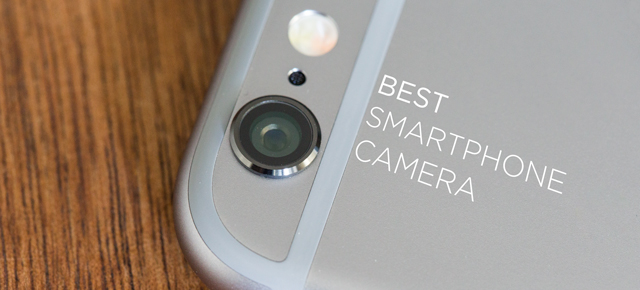Since we last pitted the best smartphone cameras against one another, a few new contenders have entered the fold, notably the iPhone 6 and iPhone 6 Plus. That makes now the perfect time to settle which smartphone packs in the snappiest shooter.
The latest phones in our lineup this time around are the iPhone 6, Samsung Galaxy S5, HTC One M8 and Moto X 2014 edition. Those join the Lumia 1020 and iPhone 5s in our breakdown. You’ll notice that the iPhone 6 Plus isn’t present in most of the tests; that’s because aside from its fancy optical image stabilisation — which we address separately below — its camera is identical to the iPhone 6.
Our tests were simple, representing the most common attributes that define great image quality. While our scenarios provide an accurate overall picture of how these cameras stack up, it should be said that there are always unique conditions where one camera might unexpectedly overachieve, so don’t be surprised if your personal experiences vary slightly. These tests also don’t take into account camera interface, filter options, or other more subjective extras you might factor in; we’re strictly focused image quality and focus speed.
A note about our HTC One M8 images: The camera was in 4:3 mode, which crops the field of view significantly. That’s why those samples may look a bit different. The image quality should’t be affected though.
All of the samples below can be seen un-cropped on our Flickr page.
Detail
Image quality depends on many factors, and one of the most important is detail. It’s a measure of how well a camera can render the world’s teensy tiniest pieces. When you zoom into your images, you want see clarity, not blur or noisy mush. Here are full-size crops of each phone shooting a finely detailed skyline:
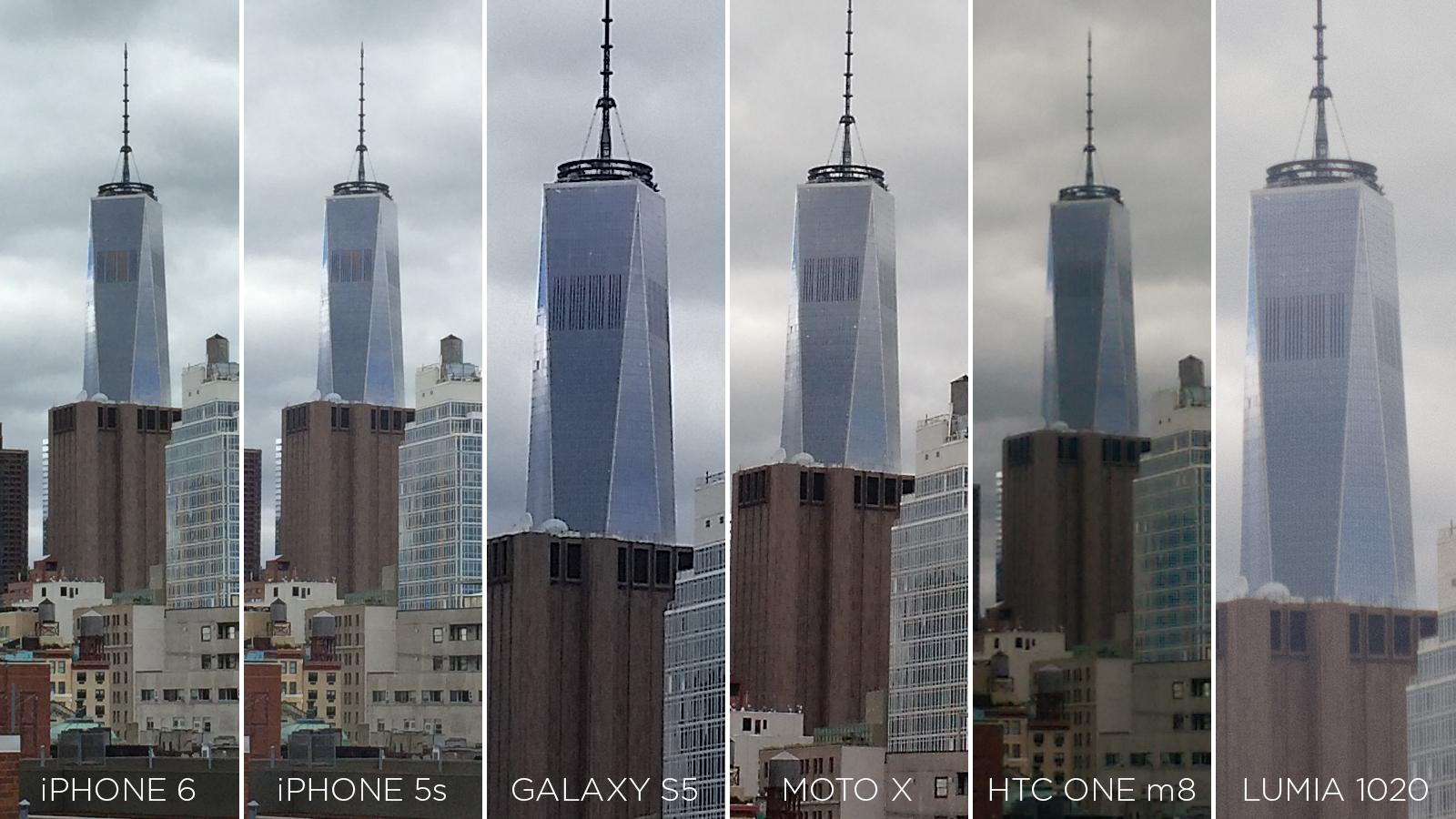
Click Expand to view at full-size.
It’s clear from a side-by-side comparison that the Lumia 1020, which boasts a ridiculous 38MP sensor and RAW files, wins this contest hands-down. Resolution isn’t everything though. Even if an image packs in more pixels, it still might be riddled with compression artifacts or noise. In this case that means that the rest of the field — with the notable exception of the downright awful HTC One M8 — are very close in quality, with a slight edge going to the Moto X and Galaxy S5. If you look at those vertical black slits on the face of One World Trade Center, the Moto X and the S5 render them better than both iPhones, which are almost identical to each other.
Winner: Lumia 1020
Runner-up: Moto X
Overall colour/tonality
Let’s zoom out on our skyline and take a look at how the cameras exposed the scene. We’re looking for a balanced range of tones that doesn’t kill shadow detail, yet looks rich and not flat. We also want the colour to match how our eyesight sees it, without distracting colour casts.
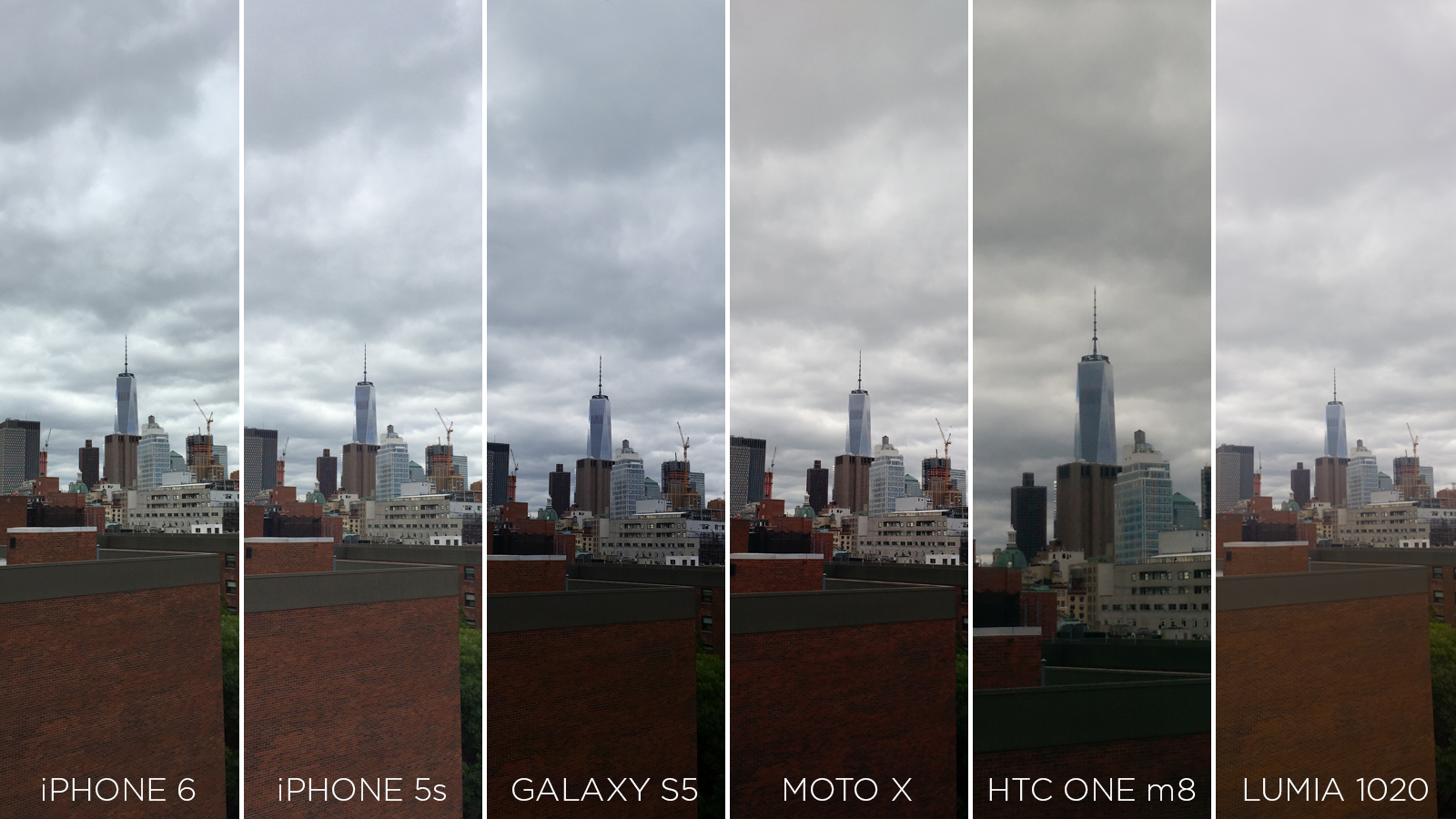
The Moto X, HTC One M8 and the Galaxy S5 crushed out detail in the dark portions of the image. You can barely see the building! The Lumia is very even — almost too even so that it looks flat — while the iPhones show some really nice localised contrast. Look at the bricks compared to the others. The iPhone 6 and 5s also had the most balanced colour, not looking too blue or too yellow.
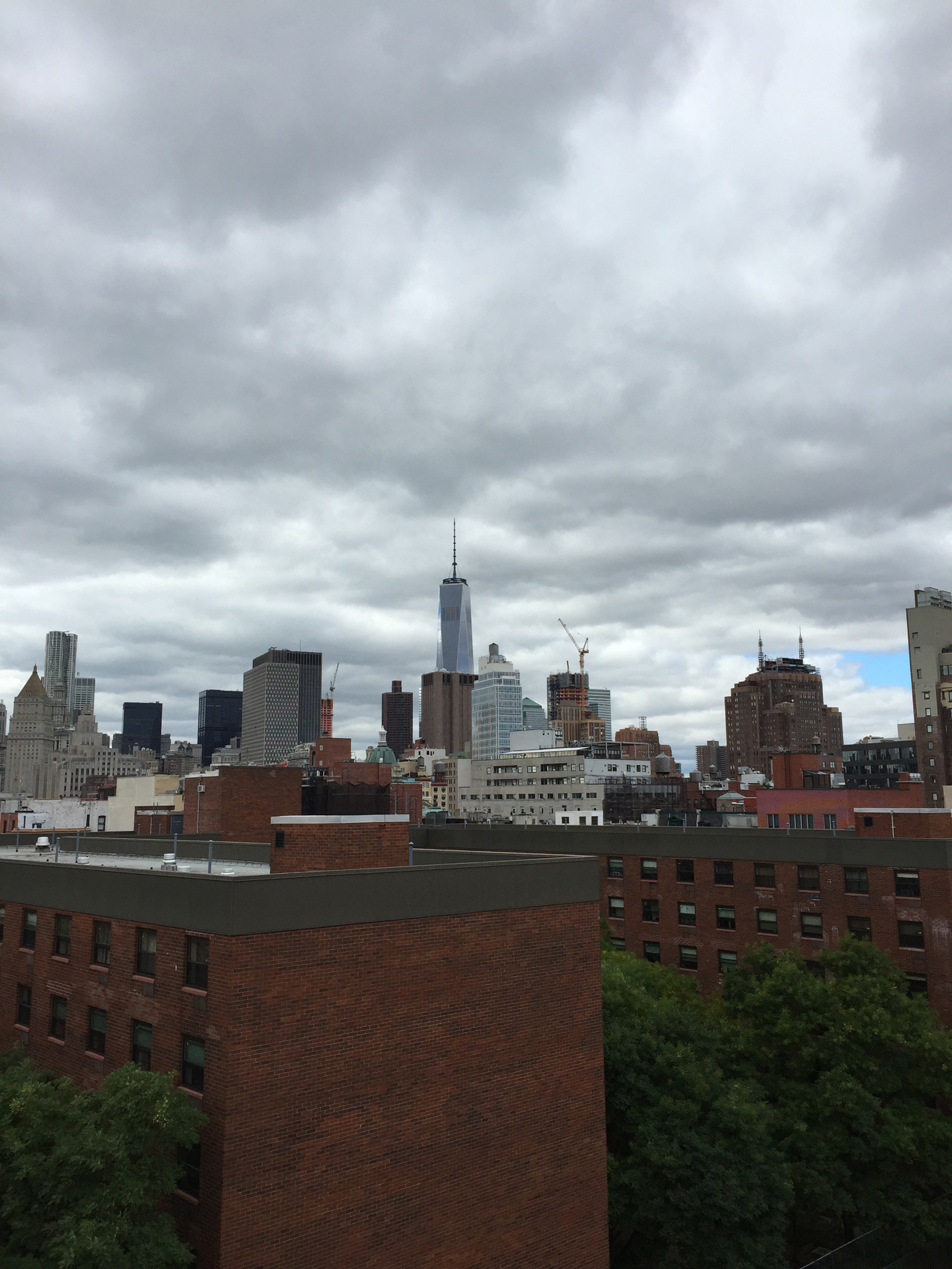
iPhone 6
Winner: iPhone 6/5s
Runner-up: Lumia 1020
Low Light
Shooting in dark conditions is one of the hardest things for the tiny sensor in your camera phone to pull off with any decent results. Unfortunately, a good percentage of smartphone photo-taking occurs in dim lighting. Our beer-bottle scene had almost no light striking it at all. The biggest thing to look for is noise, and how each phone deals with it. Noise, when left intact, isn’t always bad. It’s when the camera’s processor applies aggressive noise reduction that things can get ugly fast.

Again, because of its ability to shoot RAW files with no noise reduction, the Lumia excels beyond the competition in this department with a fine, even grain. Next is the iPhone 6, which shows a definite improvement over the 5s. In fact, this was the only area between the new and old iPhone cameras that we saw any significant difference. If you look at the numbers on the UPC label, they are clearer and brighter than the rest. The HTC One M8 puts up a good fight in overall brightness, but the detail is pretty garbled. The Moto X is terribly dark, and the Galaxy S5 is pretty muddy.
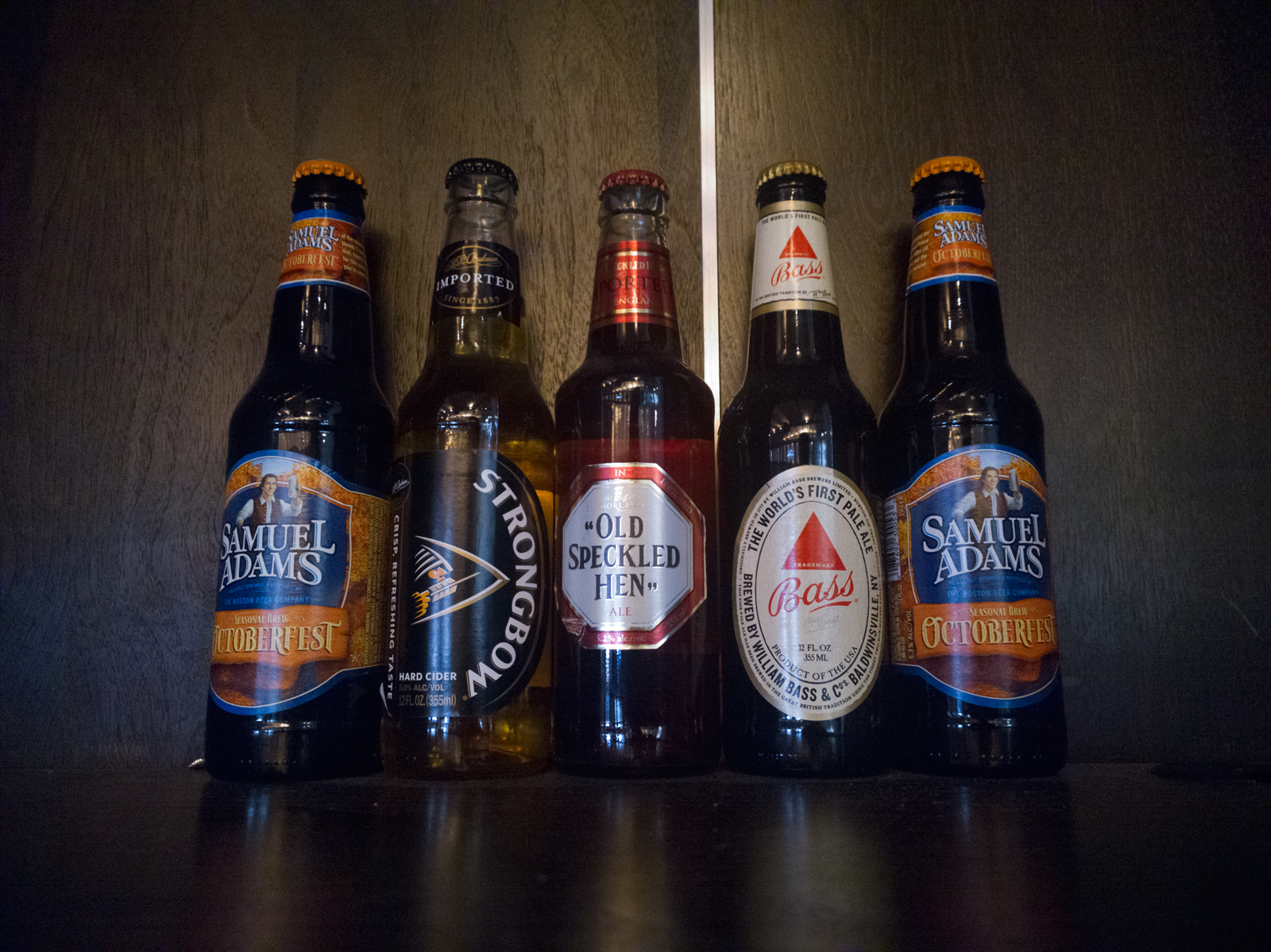
Lumia 1020
Winner: Lumia 1020
Runner-up: iPhone 6
Flash
Nobody wants to use a flash, but it’s a last resort that you sometimes just can’t avoid. The most important factors in a flash are how well it exposes your photo, and the skin tones it renders.
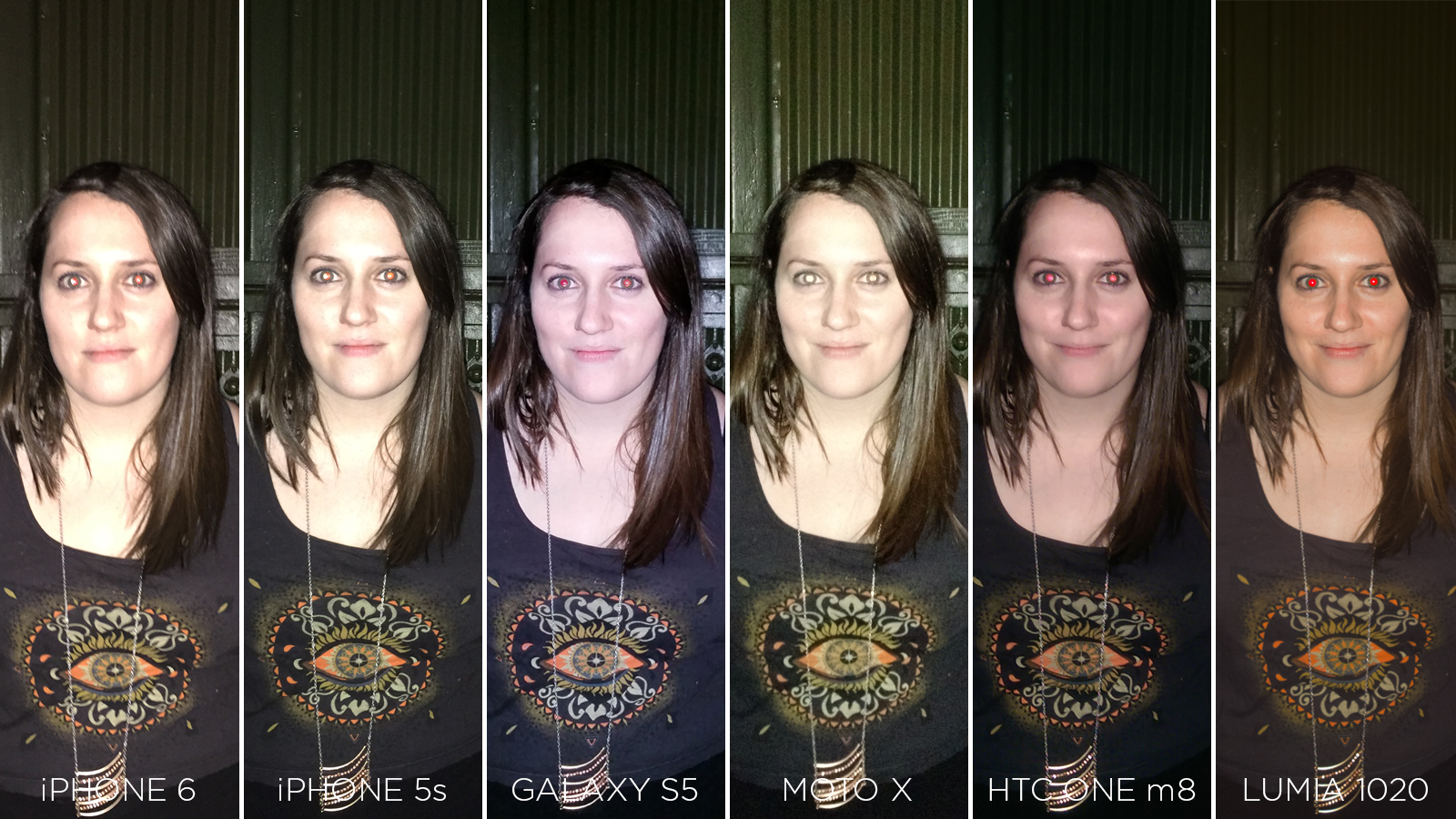
In our test, both iPhones and the Moto X succeeded only in blowing out Ashley’s face and painting her with an unseemly yellowish tinge. The other cameras do pretty well with exposure, but for skin-tone the best out of the bunch is the HTC One M8, with a nice pinkish hue. However, this test is decidedly more subjective than the others; you may prefer the slightly warmer tone of the Lumia. The Galaxy S5 wasn’t all that bad, but went a bit heavy on the purple cast.
Winner: HTC One M8
Runner-up: Lumia 1020
Auto-focus
Nothing is more frustrating than having your camera hunt around to find focus while your precious moment slips away. Companies love to make claims about the speed of their autofocus, and Apple was no exception with the iPhone 6. The company added phase-detection AF to the camera’s sensor, which does mean it should have picked up some speed.
We tested each phone in our extreme low-light scene once again, which is where cameras struggle the most to find focus. After filming each display, we counted the frames between the initial touch-to-focus, and the camera’s successful lock.
Based on our tests, there isn’t a whole lot of difference between any of these phones. All of them were steady around 1-1.5 seconds, some with astonishing consistency. Both iPhones had identical focus times at exactly 1.5 seconds, which is troubling, since Apple explicitly hyped an improvement in the 6. The only phone that was consistently any faster was the Galaxy S5 which hovered at 1.25 seconds, but that is a difference you probably wouldn’t notice in real life. The worst was the HTC One M8 at about 1.7 seconds. Again, hardly noticeable.
Winner: Samsung Galaxy S5 (by a hair)
Runner-up: Moto X (also by a hair)
HDR
Switching on the High Dynamic Range setting can be a great way to salvage an overly contrasty or backlit scene. It’s not the most important feature to have, but it’s becoming ever-more popular and capable. The best results feel natural, and avoid the cartoonish look that can occur when applied to heavily.
iPhone 6

iPhone 5s
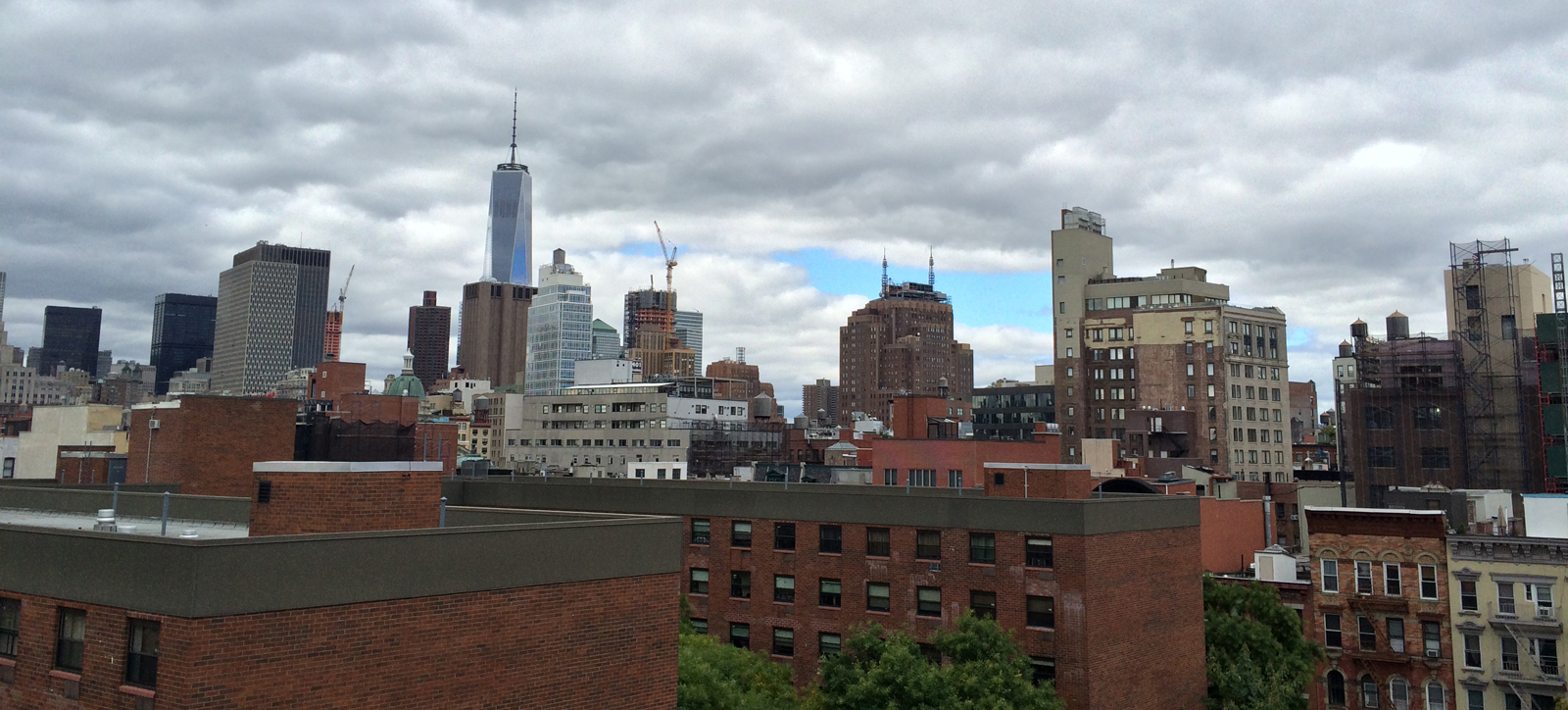
Galaxy S5
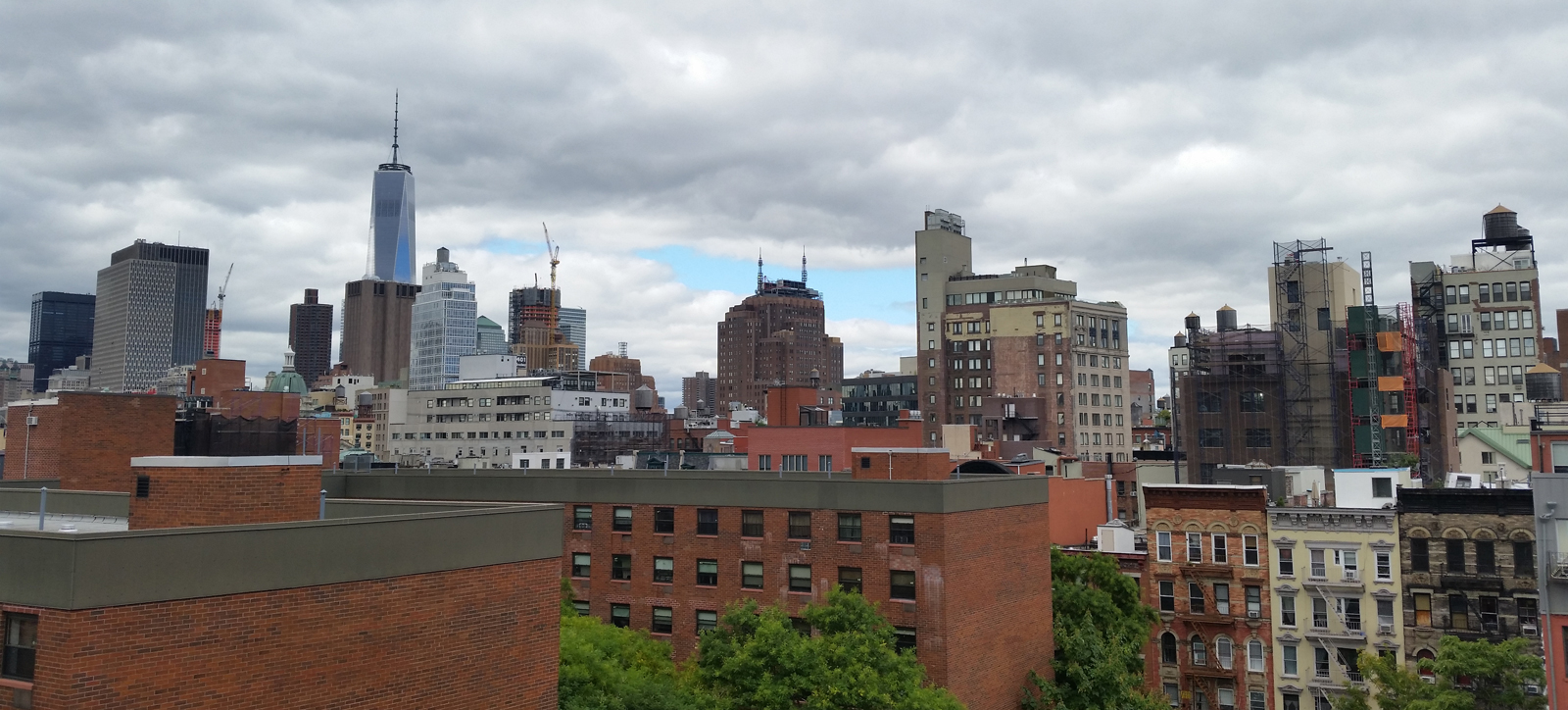
Moto X
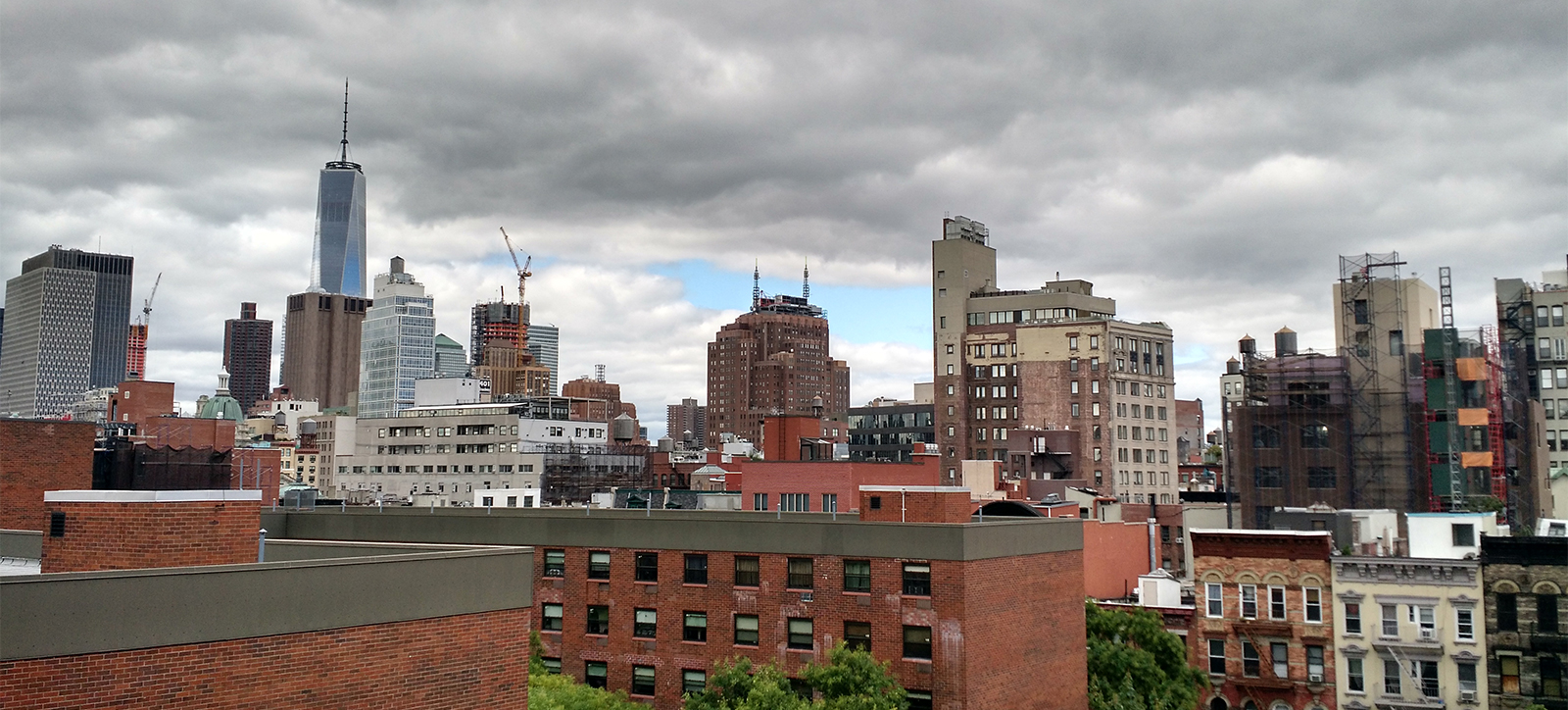
HTC One M8

The Lumia doesn’t have a native HDR mode, so it had to sit this one out. The Moto X looked just a tad overdone for our taste, while the HTC One M8 was a little washed out. The iPhones did a great job, but the standout was the Galaxy S5, with just a bit more pop without going overboard.
Winner: Samsung Galaxy S5
Runner-up: iPhone 6/5s
What About Image Stabilisation?
Despite having the same camera as the iPhone 6, the 6 Plus does include one distinguishing feature: optical image stabilisation. This means that the camera’s lens actually shifts around to compensate for your jitters, making it easier to get clear, sharp photos.
The only other camera in our lineup that features optical stabilisation is the Lumia 1020, so those are the three we compared. For stills, we did a quick test by walking briskly down stairs while taking some pics. It’s clear that the iPhone 6 Plus renders clear images while the iPhone 6 did not. The Lumia’s advantage wasn’t as major.
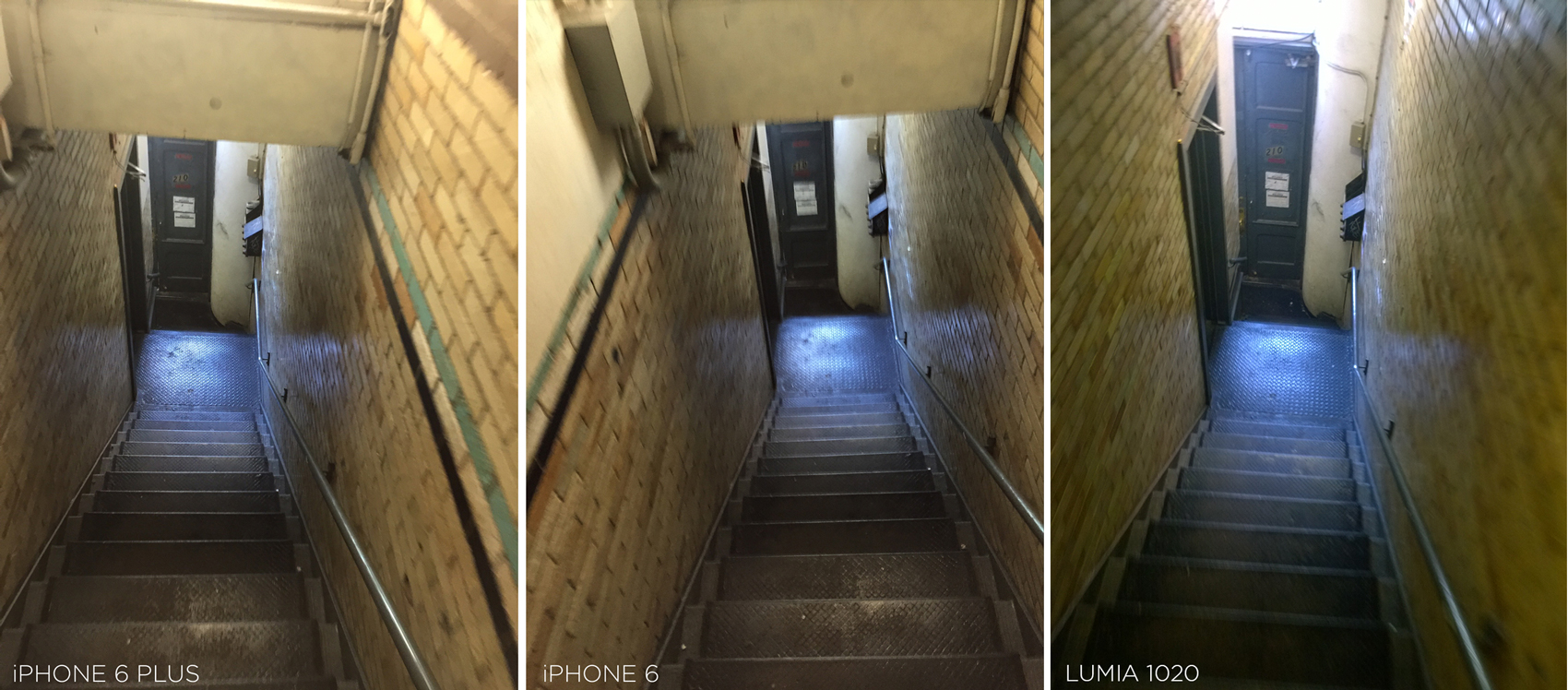

This test isn’t completely scientific, because each camera may select a different shutter speed, making each image more or less blurry. But it’s apparent that the iPhone 6 Plus renders a significantly clearer image under heavy motion.
Overall
It’s clear that each smartphone camera has its own strengths and weaknesses. If you’re choosing a phone based on its camera, the best thing to do is to evaluate what your most common subjects are and go from there. For most people, the most well-rounded camera is going to deliver the most consistently good results.
Among our contenders, we think the Lumia 1020 is the highest achiever, with its crisp detail, great low light performance, and good flash. Unfortunately, some out there may prefer to take photos with a log (or HTC One M8) than use a Windows Phone as their daily driver. If you’re one of them, the natural colour and low-light chops of the iPhone 6 win out. It was a bit of a surprise to not see more of a bump in performance in the iPhone 6 over the 5s; there was an improvement in low light, but other than that there was nothing separating the two. Still, it stands out as the most well-rounded alternative.
You may be wondering how video weights in to all this. We decided to save it for a separate post, which we’ll be sharing shortly.
Meanwhile, if you want to download the originals and do some further comparing, here are links to each phone’s Flickr gallery:
iPhone 5s
iPhone 6
Motorola Moto X 2014
Samsung Galaxy S5
HTC One M8
